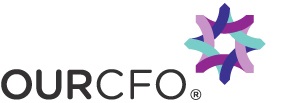

Whilst it's not everyone's favourite subject, the reality is you have to pay tax but ensure you're not paying more than you have to as doing so can affect your overall cash flow.
What you want to avoid is a mad rush at the end of each financial year. What you should be doing is understanding intimately and accurately what your profit position is during the financial year. By doing this you will be able to identify each month if the amount of tax you’re paying quarterly is right for your business.
What we find is people pay the quarterly tax bills that the tax department calculates for them. There is a problem with this because the tax office assumes that you are becoming more profitable as each year passes. So what they do is they uplift your tax payments on that assumption which often is not right for your business which in turn puts pressure on cash flow.
So as you can see it is important to understand your tax position and profitability on an ongoing basis and looking forward by using your forecasts then you can adjust your tax installments as you go throughout the financial year.
Hey guys! Greg Smargiassi here from OURCFO with another edition of Future Proof. This week we are going to continue the conversation around cash flow and how the tax system impacts on your cash flow.
First thing is that you should be in a position where you are paying tax. And why do I say that? Well if you're profitable then you will be paying tax. So paying tax is actually not a bad thing. What we do need to do is make sure that you're paying the right amount of tax as the financial year plays out. And what we often see is people waiting until just prior to end of financial year to understand their tax position and they strategise their tax position in the last six weeks of the financial year so there's this mad rush that goes on at end of financial year. So what you should do in relation to managing your tax position is understand intimately and accurately what your profit position is during the whole financial year.
Every single month you should understand your position. And by understanding your position monthly from a tax perspective, you'll also understand if the amount of tax that you're paying on a quarterly basis is right for your business. And what we often find is that people just simply pay the tax, the quarterly instalments that the tax office tells them to pay and there's a problem with that. The tax office assumes that you are going to pay or you're going to earn more profit each year as each year passes. So what they do is they uplift your tax payments on that assumption.
Now if your business has cyclical...profit cycles or if your business is not as profitable as last year, or if you have any other tax minimisation strategies that you're putting in place, those quarterly instalments are likely to be incorrect or not right for your business. And on many, many occasions when we have started working with a business, one of the first areas that we look at is their profitability and then what they've paid in tax. And nine times out of ten, we'll find that they have actually paid more tax than they needed to which then puts pressure on cash flow. So by understanding your tax position which means understanding your profitability on an ongoing basis and then looking in a forward direction using your forecast and knowing what your profit looks like going forward, then you can adjust your tax instalments as you go, as you go throughout the financial year. Now you do need to exercise some care there because there are some pretty stringent rules around varying your tax instalments and how much you have to have paid by end of financial year.
So if you're not sure about that, talk to your tax consultant. But don't be talking to your tax consultant just once a year towards the end of financial year. Talk to that person all year round. Understand what your profit position is all year round and make sure that you're paying the right amount of tax all year round. So I hope that's helpful. Another edition of Future Proof. I look forward to seeing you again as we continue the conversation around optimizing cash flow.